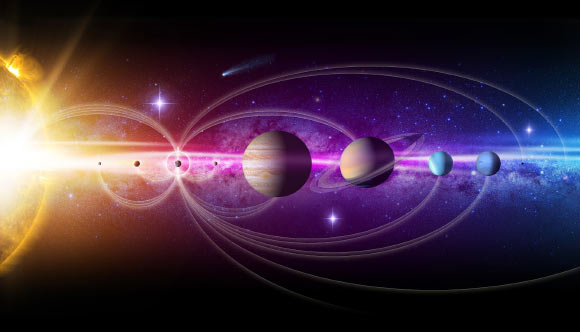An international team of astronomers from Serbia and the United States has discovered a new superhighway network to travel through our Solar System much faster than was previously possible.
Source: Sci News
The newly-discovered routes can drive comets and asteroids near Jupiter to Neptune’s distance in under a decade and to 100 AU (astronomical units) in less than a century.
They could be used to send spacecraft to the far reaches of our planetary system relatively fast, and to monitor and understand near-Earth objects that might collide with our planet.
Dr. Nataša Todorović of Belgrade Astronomical Observatory and colleagues observed the dynamical structure of these routes, forming a connected series of arches inside what’s known as space manifolds that extend from the asteroid belt to Uranus and beyond.
This ‘celestial autobahn’ acts over several decades, as opposed to the hundreds of thousands or millions of years that usually characterize Solar System dynamics.
The most conspicuous arch structures are linked to Jupiter and the strong gravitational forces it exerts.
The population of Jupiter-family comets as well as small-size bodies known as Centaurs is controlled by such manifolds on unprecedented time scales.
Some of these bodies will end up colliding with Jupiter or being ejected from the Solar System.
The structures were resolved by gathering numerical data about millions of orbits in our Solar System and computing how these orbits fit within already-known space manifolds.
Global arch-like structure of space manifolds in the Solar System. Image credit: Todorović et al., doi: 10.1126/sciadv.abd1313.
The results need to be studied further, both to determine how they could be used by spacecraft, or how such manifolds behave in the vicinity of the Earth, controlling the asteroid and meteorite encounters, as well as the growing population of artificial man-made objects in the Earth-Moon system.
“It should come at no surprise that Jupiter can induce large-scale transport on decadal time scales, as space missions have been specifically designed for Jupiter-assisted transport, with the flybys of Voyager 1 and Voyager 2 being cardinal examples,” the astronomers said.
“That gravity assists can be enabled by manifolds is also well known to astrodynamicists.”
“Yet, their widespread influence on natural celestial bodies has been largely undervalued and unexplored.”
The team’s paper was published in the journal Science Advances.
Source: Sci News

































Leave a Comment
You must be logged in to post a comment.